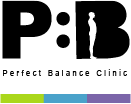
May is National Osteoporosis Month, and with over 53 million Americans at increased risk for bone fractures, it’s important to learn what this condition is and how to prevent it through a healthy lifestyle. Most people don’t know that habits involving diet, exercise and medication choice can actually affect their bone density over the course of their life. Starting this May, take action to protect your bones!
Osteoporosis Awareness: What it is and How to Protect Yourself
Assessing your prescription drug use is a good place to start. There are certain types of prescription drugs that can actually increase osteoporosis risk. Corticosteroids are synthetically derived steroidal drugs that are often prescribed to whole-body inflammatory conditions, such as rheumatoid arthritis and lupus. Unfortunately, this class of drugs has also been associated in medical trials with a host of poor health outcomes such as high blood pressure and osteoporosis. There are also individual drugs that can increase your osteoporosis risk. Invokana, an SGLT2 inhibitor that is prescribed to type-2 diabetics, has caused severe side effects such as diabetic ketoacidosis and bone fractures. The resulting injuries are actually so bad that there are thousands of outstanding Invokana lawsuits. This is just one extreme example, but make sure to read the packaging on your prescription drugs to determine whether they put you at increased risk of osteoporosis.
Outside of specific causes, there are also general genetic risk factors to be aware of. Women are about five times more likely than men to be diagnosed with osteoporosis. This is because
their bones are smaller than male bones on average. The elderly are also at a heightened risk compared to the general population. As you age, your bone matter deteriorates in composition and function.
You might be thinking: what can I do to reduce my risk of ending up with this painful condition? Exercise is a great place to start. Both aerobic (cardio) and anaerobic (weightlifting) exercises can increase bone health. Resistance training especially can be useful to increasing bone density. Try to exercise at least five times a week, varying your intensity and type. By incorporating both cardio and weightlifting into your exercise regimen, you’re not only reducing your risk for osteoporosis, but also reducing your risk for a variety of other chronic diseases such as high blood pressure and cancer.
A healthy diet is also crucial to maintaining good bone health throughout life. Getting enough calcium, magnesium and Vitamin D can help build and protect strong bones. Calcium can be found in dairy products. Look for grass-fed or pastured products whenever possible, as they are more nutrient-dense than conventional dairy. Magnesium is found in vegetables, legumes, and nuts. Vitamin D can be acquired through seafood consumption as well as dairy. However, the best way to increase your Vitamin D levels is by spending time outdoors in the sunlight.
If you’re one of the 53 million Americans with an increased risk of bone fracture, start implementing these positive lifestyle changes today to reduce your risk of developing osteoporosis. Use National Osteoporosis Month as a springboard to jump into action, and try to start slowly with a friend or loved one. It’s hard to change your habits in a single day, but by slowly implementing diet and exercise improvements as well as awareness about hidden risks of certain medications, you can keep your bones healthy for your entire life.
For more information about Osteoporosis Awareness
If you would like additional information about Osteoporosis or to discuss how we may be able to help with your issues/queries please contact us here and we will get back to you as soon as possible.








